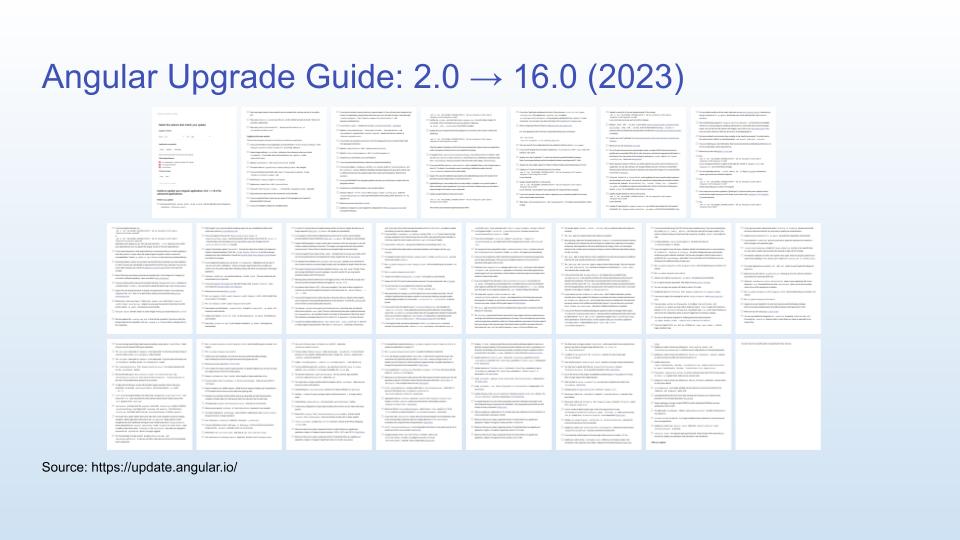Technical Debt
Technical debt is a metaphor coined by Ward Cunningham to describe code that is written that does not align with the best solution due to a limited understanding of the problem. Knowingly taking on technical debt can be beneficial when iterating on a feature where we will expect to learn more as we start to get feedback, and incorporating that feedback back into the program is seen as paying off that debt, but not returning to the code with the new things that have been learned is seen as allowing interest to accumulate on that debt. The term can sometimes be used to describe code issues that were caused by recklessness, but Cunningham has clarified that he does not believe that knowingly writing inferior code should be considered technical debt.[1]
As the concept of technical debt became useful for teams, even more terms for specific flavors would emerge:
- Code debt - code source files is hard to read and maintain
- Documentation debt - documentation is outdated to point of being misleading
- Test debt - test coverage is very low or tests are not at the right level to be effective
- Accessibility debt - many accessibility issues exist that prevent users from being able to use the application
- Build debt - build and deployment pipelines are outdated, fragile, and hard to maintain
- …and just about anything in a software project that you can fall behind on if you don’t keep up with it.
I have a talk, “Buried in Technical Debt,” that further defines technical debt and ways to handle it in a project.
The beliefs that lead to increased technical debt
I have spent time on several teams that had let their technical debt grow into large projects. Thinking about those times, I considered the reasons that some people may think that can lead to these situations.
“Maintenance does not make money. Cool features do.”
Maintenance tasks may not seem to give us anything that we can sell to a customer in the short term, but losing sight of important maintenance tasks can really cost you in the long term.
Consider a kitchen, which seems to only exist for you to prepare and eat food, right? Why go in there only to spend time cleaning it up? Well, we acknowledge that, if we do not clean up after ourselves periodically, then we get a mess that is too overwhelming to clean, and it is going to make us sick living in it.

Relating that to a web app, you may have an app that is build on top of a framework where new major versions consistently are released, usually on an annual basis. Imagine you have an Angular 2 project, and you use the Angular Update Guide to plan out the effort of handling all possible breaking changes with each new major version that is released.
It makes sense that, as the gap between releases increase, the list of things to verify and modify gets larger, as many new breaking changes are unique to each version and no time is saved by waiting and only updating once, especially as it is recommended that you always only update one major version at a time to make sure your application stays in a good state and controlling for the amount of things that need to change at any given time. As a result, the effort of updating Angular 2 to each newest major version as it is released should be almost exactly the same as the effort of waiting and performing a huge update of 14 major versions all at once; however, you are less likely to get approval to take time away from product work with a huge, overwhelming project, and working on things a little bit at a time could have been much more manageable and acceptable.

Considering how older versions of frameworks lose support for security and stability updates, it can be a very frightening problem to suddenly realize that you need to be current after having not prioritized it. So even if you may feel that you do not need the helpful new features that major framework updates will provide, the hidden and surprise cost of missing out on a vulnerability fix is a serious issue.
“I’m aware of our issues, but I can’t convince anyone to take action.”
It can be disheartening to know there is a problem that needs attention that others cannot see or believe to be important.
Think about risk in terms of the perspectives of other roles and ways in which your team can be more efficient in the long term if you can fix some of those issues soon. Think about the security threats and the customer support nightmares that we can alleviate and restore confidence with our customers.
As new work comes up, try to push back against requests to rush something out in an incomplete state that can cause issues in the future. Advocate for the software, and try to leave things better than you found them when appropriate.
“We don’t have the time with other urgent priorities. Maybe we’ll come back later.”
As urgent priorities are resolved, more urgent priorities will arrive. It is rare for there to not be something that feels urgent, so waiting for that moment when there is nothing urgent is not a good strategy. Also, when people say that we will come back to something at a later time without actually making specifics about how that will work specifically, it is extremely likely that “later” is a time that never comes. We can’t do everything at once, but we need to make a plan.
When considering, technical debt tasks are often considered Important but Not Urgent when classified using an Urgent-Important matrix, so time should be scheduled for it. Make some kind of budget and spend time on it at a regular rate. Maybe this looks like picking up 1 card that is tied to engineering maintenance for every 3 or 4 cards that came from product management priorities, or maybe this looks like about 20% of time spent on engineering tasks spent on maintenance.
“We assembled a perfect team of perfect engineers so we don’t need to do this.”
Nobody’s perfect. We are always learning, and our partial understanding of the world is always improving. It is not uncommon for engineers to find old code that they themselves had written and to wonder how they could have written something so inferior to what they could write now.
Regardless of perceived skill level or experience of engineers on a team, there is always a benefit to getting multiple perspectives as the code is being written to get the best quality ahead of time, so consider mob programming or pair programming to shift the code review process earlier.
“Our technical debt is so out of control, we need to just rewrite the entire thing.”
I have been a part of multiple teams that decided that their technical debt had seemingly become so out-of-control that there was no choice anymore but to rewrite the entire project and start over.
Sometimes, this is actually required, such as when platforms like Adobe Flash or Silverlight become impossible for users to use. But software rewrites are always inherently very risky, very costly, and can leave a team with more harm and headaches than they had before.
Regardless of how big the problems seem to be, there should always be an effort to refactor incrementally over time. Refactoring should never actually change the functionality, and we can use our tests to ensure this. This is tricky for legacy code projects without much test support, but aspire to write tests at the lowest level of the testing pyramid that is feasible for that part of the app and that provides valuable feedback for what you are trying to test.
Most important lessons I have learned
In my time managing technical debt in software projects, I feel that the following considerations have been important to take away:
- Review technical debt occasionally and consistently
- Keep dependencies up-to-date
- Get others on board by understanding the value they can expect
- Improve quality through collaborative working
- Favor incremental refactoring over full rewrites
- Use test suites to refactor safely
References
Ward Cunningham first used his debt metaphor in “The WyCash Portfolio Management System” and he made clarifying remarks in “Ward Explains Debt Metaphor”. ↩︎
Backlinks
-
Urgent-Important Matrix
Work that is needed to pay back on technical debt will also usually belong in this quadrant, and making time to perform that technical maintenance will be helpful to mitigate future potential issues to the platform.
-
Buried in Technical Debt?
Buried in Technical Debt? was my first talk I started giving at technical events. Constantly being slightly updated to reflect my improving understanding of the concept and how to apply it (which is ironic, given that sounds like the definition of technical debt), this talk is now available in both a full hour-long format and a condensed 5-minute lightning talk version. Both versions also cover related subjects such as the Urgent-Important matrix.